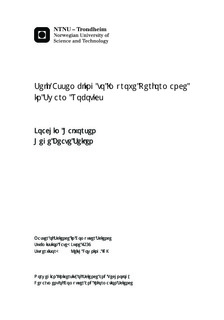| dc.description.abstract | This thesis gives a brief introduction to the field of swarm robotics, and investigates the advantages of using self-assembling for swarm robots in difficult environments. The current research in swarm robotics has already demonstrated advantages of using self-assembling, including the ability of the swarm to drive up steep slopes and the ability to pull objects that are larger than the robots themselves. Robots can have multiple advantages by being small. With the ability to self-assemble the robot swarm can physically connect to become a larger entity, when this is advantageous. This project continues the research in swarm robotics, by investigating self-assembling in environments with complicating factors, such as ice, strong wind and obstacles. We made a robot simulator to be able to perform experiments, and designed several scenarios with difficult environments. By using mechanisms inspired by social insects, the robots were able to perform complex tasks when working together as a swarm. Each robot was controlled by an arbitration architecture, where behavior modules vote for actions. The votes are weighted based on the general and specific importance of the behavior module, which is found by an evolutionary algorithm and an objective situation manager respectively.The results from this thesis demonstrate that self-assembling can improve the mobility of a swarm of robots, in environments with complicating factors, such as ice, strong wind and obstacles. When gradually increasing the wind velocity in sequential experiments, we found that the use of self-assembling went from being unnecessary, to become a faster method to traverse the environment, and to finally become necessary in order to traverse the whole environment. The robots adapted to the different experiments by increasing the use of self-assembly as the wind velocity was increased. This thesis contributes to the field of swarm robotics, by demonstrating and analyzing the mobility advantage of the swarm robots by using self-assembling in these difficult environments. | nb_NO |

